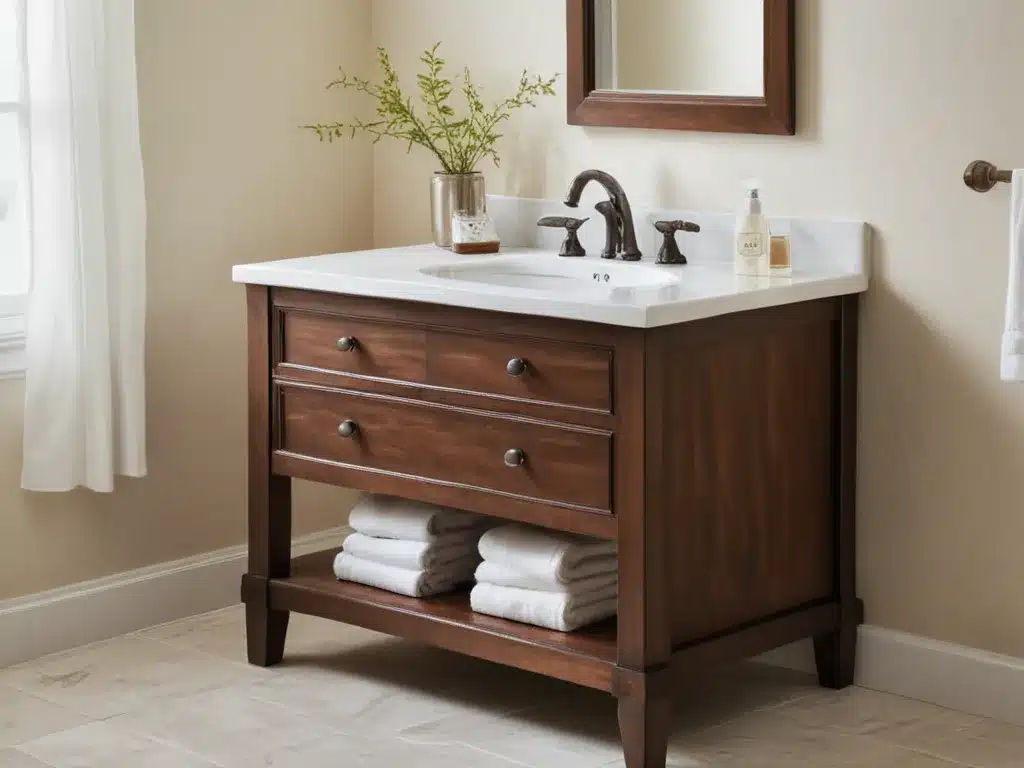Introduction
Keeping your bathroom clean can feel like an endless chore. No matter how much you scrub and disinfect, soap scum, mildew, and grime seem to reappear almost overnight. However, with the right techniques and ingredients, you can keep your bathroom pristine. One of the best natural cleaning solutions is simple distilled white vinegar. Vinegar is an effective and economical cleaning agent that can tackle even the toughest bathroom messes. In this article, I will provide tips on using vinegar to clean all the major areas of your bathroom.
Tackling Soap Scum
Soap scum is one of the biggest nuisances in bathrooms. This grimy, sticky film accumulates on shower walls, doors, bathtubs, and sinks. Vinegar is the perfect solution for dissolving soap scum.
Cleaning the Shower
To clean soap scum off your shower walls and doors, fill a spray bottle with undiluted white vinegar. Liberally spray the walls and doors, allowing the vinegar to soak for 5-10 minutes. Use a sponge or scrub brush to agitate the vinegar over the soap scum. Rinse thoroughly with hot water. For extremely stubborn deposits, apply vinegar directly and let sit overnight before scrubbing.
You can also make a paste with baking soda and vinegar. Sprinkle baking soda directly onto soap scum and spray vinegar over the top. Let the paste sit for 30 minutes before scrubbing and rinsing. The chemical reaction helps break down soap scum.
Cleaning the Bathtub
Bathtubs are prone to soap scum buildup. To clean, spray undiluted vinegar over all surfaces and let sit for 15 minutes. Use a scrub sponge to agitate the vinegar over soap scum. For tougher grime, apply baking soda directly to the scum and spray vinegar over the top. Rinse thoroughly after scrubbing.
For ongoing prevention, wipe down the bathtub with undiluted vinegar after each use. The vinegar residue will help repel soap scum accumulation between deep cleanings.
Cleaning the Sink
For sink surfaces, fill the basin with equal parts vinegar and warm water. Let soak for 30 minutes, then scrub thoroughly. Rinse with hot water. For ongoing prevention, spray sinks with undiluted vinegar after use and wipe down. The acetic acid in vinegar dissolves fresh soap scum so it won’t stick.
Deodorizing Drains
Bathroom sink and tub drains can collect grime, hair, and bacteria, causing nasty odors. Vinegar is a natural deodorizer.
Sink Drains
To deodorize and clean sink drains, pour 1/2 cup baking soda down the drain followed by 1/2 cup vinegar. Let the foaming chemical reaction sit for 5-10 minutes. Rinse with hot water. For ongoing freshening, pour 1/4 cup vinegar down the drain weekly.
Bathtub Drains
Remove tub drain covers and place them in a plastic bag with 1/4 cup vinegar. Seal and let soak 30 minutes. Rinse thoroughly before replacing cover. To deodorize the drain itself, pour 1 cup vinegar down the drain weekly. Let sit overnight. In the morning, run hot water for a few minutes to rinse.
Removing Mineral Deposits
Hard water can leave lime, calcium, and mineral deposits on showerheads, faucets, and tile. Vinegar dissolves these deposits for streak-free shine.
Faucets and Showerheads
To remove mineral buildup, submerge showerheads and sink faucets in a bowl or plastic bag filled with undiluted white vinegar. For tough stains, let soak overnight. For mild deposits, 30 minutes should suffice. Scrub with an old toothbrush if needed. Rinse and dry.
Tiles
Spray full-strength vinegar directly onto mineral deposits on tile and grout. Let sit for 30 minutes, then scrub with an old toothbrush. Rinse thoroughly with hot water. For regular upkeep, wipe tiles down with diluted vinegar weekly.
Whitening Grout
Grout easily absorbs grime and stains over time. Luckily, vinegar can whiten discolored grout. Use an old toothbrush to rub undiluted vinegar directly onto grout lines. Let sit 5-10 minutes, then scrub. Alternately, make a paste with baking soda and vinegar. Spread onto grout and let bubble for 20 minutes before scrubbing. Rinse thoroughly.
Eliminating Mildew
The humid environment of bathrooms makes them prone to mildew growth, especially around grout, caulking, and shower curtains. Vinegar is a natural anti-fungal that can kill and prevent mildew.
Grout
To remove mildew from grout, spray full-strength vinegar onto affected areas. Let sit 10 minutes. Scrub with an old toothbrush and rinse. For tough stains, first sprinkle baking soda onto the grout. Spray vinegar over the baking soda and let bubble for 20 minutes before scrubbing.
Caulking
Spray undiluted vinegar onto mildewed caulking. Let sit overnight, then rinse thoroughly. Repeat daily until the mildew disappears. Going forward, wipe caulking down weekly with vinegar to prevent regrowth. Consider recaulking if the mildew is severe.
Shower Curtains
Add 1 cup vinegar to your washing machine rinse cycle when laundering mildewed vinyl or cloth shower curtains. For periodic freshening, spray curtains with undiluted vinegar and let sit 1 hour before rinsing in the shower or tub. Let air dry.
Disinfecting Surfaces
While not as strong as bleach, vinegar is a natural antibacterial that can kill many germs and viruses when used undiluted.
-
To disinfect countertops, toilets, and other hard bathroom surfaces, spray with undiluted white vinegar and let sit 10 minutes before wiping clean with water.
-
Soak cleaning rags and sponges in undiluted vinegar for 10 minutes to disinfect them.
-
For a stronger disinfecting cleaner, combine 1 cup vinegar with 1 cup hydrogen peroxide in a spray bottle. Spray surfaces and let sit 10 minutes before rinsing.
Conclusion
With its cleaning power and antimicrobial properties, vinegar is truly a bathroom’s best friend. Follow these tips to use vinegar effectively throughout your bathroom. You’ll achieve sparkling clean results without harsh chemicals. A bottle of white distilled vinegar is an economical yet powerful addition to your green cleaning toolkit.







